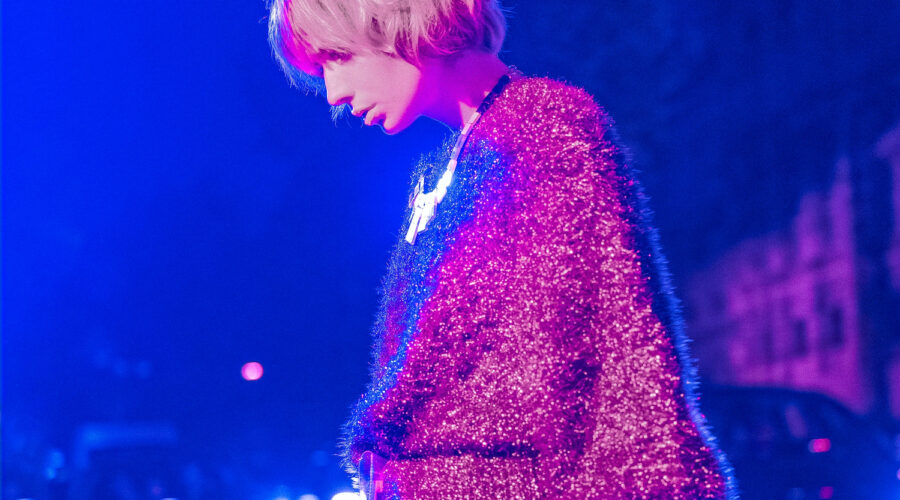Candy Flipping: One of the Best Feelings In The World. But How Do You It?
Candy Flipping means taking LSD and MDMA at the same time. The drugs work together fantastically. Thousands of trip reports attest to the wonderful synergy. And recently, scientific findings are backing up the helpfulness of combining these two psychedelics.
Are These Drugs Safe?
LSD and MDMA are well studied over decades. Researchers and users find them to be largely physically harmless. (Although with MDMA you don’t want to do it too often–a good rule of thumb is once every three months or so. And with LSD there are more psychological dangers.)
LSD is Intense in High Doses
As cool as LSD is, it can be overwhelming. At doses above 100mics, I (Reilly) often get scared when the effects kick in. The swirling colors and shapes can disorient me and frighten me. I can feel like there’s another intelligence in the room with me–and I’m not always sure how to deal with it. I can feel like I’m losing control or going to die. (Always, for me, these feelings pass. But they’re scary in the moment.)
What I feel is common. In a clinical trial of psilocybin–which feels a lot like LSD–one-fifth of people reported that a significant portion or their entire psilocybin experience was characterized by anxiety or unpleasant psychological struggle. After LSD or psilocybin, a few people end up feeling suicidal or psychotic.
What Happens When You Add MDMA to LSD?
MDMA trips, on the other hand, are only rarely difficult. MDMA washes fears. I feel safer, more connected to myself and the people around me, as if everything’s ok. Things I thought were threatening–even dying–seem just fine.
The Physiology of MDMA
Why? MDMA releases serotonin, norepinephrine, dopamine, vasopressin, and oxytocin, neurotransmitters associated with positive mood. MDMA can reduce blood flow to the amygdala, a region of the brain associated with fear and anxiety. A down-regulated amygdala means less terror. MDMA feels like a protective blanket.
With that sense of ease and comfort, I can open to the experience of the psychedelic. The colors and visuals feel warmer and more welcoming. The other intelligence I feel around me (and inside me) feels kinder and gentler–more like a friend than a stranger. And the energy of the psychedelic feels more healing. A warm, white, flowing light.
The Research on Candy Flipping
What’s more, larger surveys of psychedelic users back up my anecdotal reports. A new paper out of NYU and Imperial College London was titled “Co-use of MDMA with psilocybin/LSD may buffer against challenging experiences and enhance positive experiences.”
When people mix MDMA with psychedelics, the report says, they felt more “self-compassion, compassion, love, and gratitude.” Candy flipping reduced the number of challenging experiences, and lessened feelings of grief and fear. Researchers said that future clinical trials of psychedelics should think about using MDMA in combination with psychedelics (which hasn’t happened yet, to our knowledge). Especially when people are doing couples therapy or group therapy.
Go Low with the MDMA
Importantly, the study authors said the calming effects of MDMA worked best when people used a low dose of MDMA, rather than a higher dose.
RELATED: How LSD Affects The Brain
When to Take Which Drug?
Candy flipping doesn’t mean you will take both substances at the same time, although some users will do this. If you want to reach the peak effects of both compounds at around the same time, simultaneous dosing might not be the best method. This is because it takes around 1.5 hours to reach the peak of an MDMA experience while for LSD it will take about three hours until the most intense subjective effects appear.
Many people like to take the LSD first, wait until the effects begin, and then take the MDMA, or vice versa. It depends on if you want to trip or have the MDMA experience initially, before changing the effects with the other drug.
Another way to go about candy flipping is to wait until the peak effects of one drug have passed, then take the other. This way, you can settle into the effects of one drug and have a big chunk of time experiencing MDMA or LSD alone, before altering the experience with another compound.
We asked people on X–which used to be Twitter–when they like to take their MDMA and when their LSD. We got a variety of answers.
Opinion 1: Take the LSD First, then Add MDMA
“The LSD will last a little bit longer so I take that first,” said a user called Botho. User Hypnogo agrees, saying, “Wait a few hours after dosing the acid to take the molly, or you’ll be coming down in the middle of an acid trip. Which isn’t fun.” ArchaicRevival echos the sentiment, saying, “I always prefer taking MDMA 4 hours after LSD. They don’t peak together, but you come down from both at the same time, which is better than coming down from a roll and still tripping.”
Opinion 2: Take the MDMA, then Add LSD later
“The MDMA should be taken first & 2 hours later the LSD ingested,” said Darren Sangita, a psychedelic music composer. “Why’s is this best IMO? Because the MDMA relaxes and refreshes, the energetic and blissful waves can be surfed till the acid drops.”
Option 3: Take MDMA as a Rescue Med
Another user, Egdur, says you should use the MDMA anytime you’re feeling worried on LSD.
Option 4: Take MDMA with the LSD, then Take More MDMA Later
“Do both at the same time, then another MDMA 6 hours into it,” said Alex Grenier, founder of Shaman Pharma, a psychedelic research company. The idea here is that you want to have MDMA in your system during the entire trip, so you feel comfortable the whole time.
The Appeal Of Flipping
“Flipping” doesn’t just work for LSD. Flipping refers to using MDMA in combination with any other substance, typically psychedelics. In addition to candy flipping, there is hippie flipping (MDMA and magic mushrooms), kitty flipping (MDMA and ketamine), and nexus flipping (MDMA and 2CB).
Many users of psychedelics and MDMA find candy flipping appealing because they enjoy the effects of both drugs on their own, so they want the best of both worlds.
When candy flipping, the effects of LSD someone wants to experience might include the following.
- Visual effects (color enhancement, morphing objects, seeing kaleidoscopic or fractal patterns with eyes open or closed)
- Laughter
- Increased sense of humor
- Introspection and personal insights
- Emotions like awe and gratitude
- Spiritual experiences like interconnectedness and a sense of the sacred
There are also many positive effects of MDMA someone would want to experience alongside the above psychedelic effects, including the below.
- Euphoria (both mental and physical)
- Empathy
- Love
- Connection to others
- Compassion
- Enhanced appreciation of music
- Being able to confront difficult emotions
RELATED: What Does ‘Set And Setting’ Mean When Using Psychedelics?
The Effects Of Candy Flipping
There is no way to predict what a candy flipping experience will be like. While an MDMA experience can be fairly predictable in its effects, you still never know for sure what kind of thoughts, emotions, and therapeutic experiences might occur.
With LSD, the effects are even more unpredictable. This is due to it being a psychedelic compound, of course. Psychedelic effects depend much more heavily on your mindset and environment (“set and setting”) compared to MDMA.
The effects of candy flipping depend on several factors.
- The order in which you take the MDMA and LSD
- How long you wait in between dosing
- The dose you take of MDMA and LSD
- Whether the MDMA is, in fact, MDMA and not something else
- The purity of the MDMA (it might be adulterated with other substances)
- Your environment (including the physical setting you’re in, plus who you have the experience with)
- Individual biological and psychological factors, such as your mental health and personal sensitivity to MDMA and/or LSD
Due to all of these factors, it’s no surprise that the effects of candy flipping can vary so much between one person and the next. Moreover, candy flipping will feel different each time you do it. Just like with LSD on its own, no two experiences will be the same.
Expect A Range Of Emotions While Candy Flipping
When candy flipping, you can expect to experience a range of emotions and sensations. From the MDMA, you will typically feel some empathogenic effects (i.e. empathy and emotional connection), while the LSD will induce many classic psychedelic effects. It is common for there to be highs and lows, as with any psychedelic experience without MDMA thrown into the mix.
There isn’t a standard candy flipping experience, nor should you rely on having a smooth and purely positive experience due to the influence of the MDMA. However, people who have experience with candy flipping tend to report the following effects.
- Feelings of euphoria, joy, or bliss
- Social bonding
- Visual effects, such as objects appearing to “breathe” or “grow”. You may experience a tracer or trail effect from moving objects
- Lights, music, colors, and certain textures may all captivate your attention, becoming a source of fascination and enjoyment
- MDMA might make you feel more sociable, but the LSD might also make social situations more confusing
- Emotional challenges and self-examination
How Long Does Candy Flipping Last?
The effects of LSD last 8-12 hours. Although, with a high enough dose, an LSD trip can last longer than 12 hours.
In contrast, an MDMA experience is much shorter, with it lasting between 3-6 hours.
So, if you took both substances at the same time, you can expect the experience to last up to 12 hours — with a potential for longer. Candy flipping will likely be a 12+ hour experience if you take the MDMA first, then the LSD after.
When the candy flipping experience ends, you might experience some side effects. These include things like lethargy, low mood, or headaches the following day or two. These side effects will generally be down to the MDMA, which results in a depletion of serotonin.
Some users refers to this MDMA hangover or comedown as “blue Mondays” or alternatively “Tuesday blues”. This is due to the delayed crash that people experience after a weekend of raving or partying.
Harm Reduction Tips For Candy Flipping
If thinking about combining MDMA with LSD, you first need to prepare with some crucial harm reduction information.
How To Take MDMA Safely
Here are some points to keep in mind before buying or taking MDMA.
- If you source MDMA from the illicit market, it could contain unknown or potentially dangerous compounds and adulterants. Ecstasy pills might contain amphetamine (speed), caffeine, 2CB, ketamine, piperazines, PMA, and PMMA. Both PMA and PMMA are hazardous and have been implicated in a number of deaths. MDMA crystals, meanwhile, are more commonly adulterated with procaine and methamphetamine. Also, DanceSafe found that about half of the alleged MDMA it tested between 2011 and 2013 contained no MDMA at all. This is why it’s crucial to test your drugs, using an MDMA testing kit (like one provided by DanceSafe).
- MDMA can interact negatively with antidepressants and/or medications such as monoamine oxidase inhibitors (MAOIs).
- It can increase heart rate and blood pressure. This may pose an extra risk to you if you have a heart condition.
- Unlike LSD, MDMA is associated with an increased risk of seizure, heatstroke, and hyperthermia.
- When taking MDMA, you want to ensure you stay hydrated to avoid complications. But don’t drink too much water, as this will pose its own risks.
How To Take LSD Safely
Mixing in MDMA with your LSD experience doesn’t mean you can ignore harm reduction tips for tripping. You will still experience psychedelic effects, which may be powerful, perhaps even overwhelming.
If you want to minimize the risks of a “bad trip” when candy flipping, follow the below.
- Make sure you have genuine LSD and not another compound that is sometimes sold as LSD. These include things like DOx and 25I-NBOMe. The use of both DOx compounds (e.g. DOM and DOI) and 25I-NBOMe have been associated with negative health outcomes. High doses of DOx compounds can lead to cardiovascular complications while 25I-NBOMe, which is a highly toxic compound, has been implicated in a number of deaths. This is why you should always test your LSD, which you can do by using a testing kit from a provider like DanceSafe.
- Keep in mind that LSD is tasteless, so if you have a tab that tastes bitter or metallic, this could be a sign the compound is, in fact, 25I-NBOMe. As the saying goes, “If it’s bitter, it’s a spitter.”
- Prepare for a psychedelic experience, including drastic changes to your perceptions, thoughts, and emotions.
- Save the experience for when you feel rested and in a positive, stress-free frame of mind. Taking psychedelics when you feel particularly low or stressed can increase the risk of a distressing experience.
- Only share the experience with other people you are close with and who you can trust. You want to ensure that you will be around others who will have your welfare in mind.
LSD, like other psychedelics, doesn’t tend to mix well with certain mental health issues, such as schizophrenia and other psychotic disorders. If you have one of these conditions, you might be vulnerable to a negative impact on your mental health.
How To Take LSD And MDMA Together
Be thoughtful about the environment in which you will have the experience. It is true that MDMA may be suited to a club, party, or rave setting, but the powerful altered state induced by the LSD might make these environments feel overstimulating and overwhelming. You ideally want to have the experience somewhere safe and comfortable.
Regarding the timing, many people find it is best to take the LSD first. This is because MDMA often brings a more unpleasant comedown. So you might not want to take MDMA first and LSD later — as you might be tripping during the comedown stage of the MDMA. This could make for an uncomfortable or challenging experience.
Candy flipping can be safe if you keep the above precautions in mind. When done safely, candy flipping can be an extremely enjoyable, meaningful, and therapeutic experience.
Disclaimer: We do not endorse the illicit use of Schedule 1 psychedelic compounds in a non-therapeutic setting. We do, however, hope the regulations look at the research to understand how these drugs can used in powerfully positive ways.



